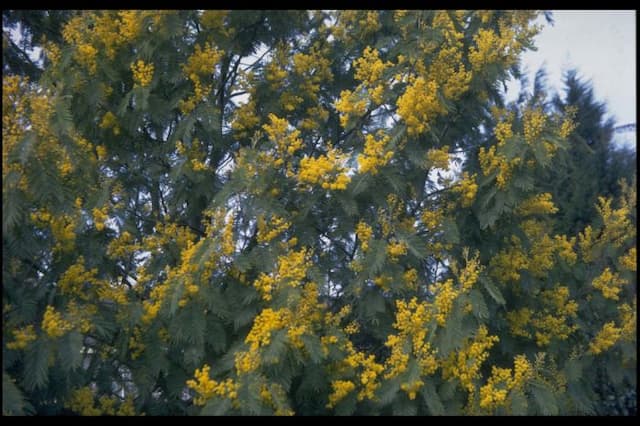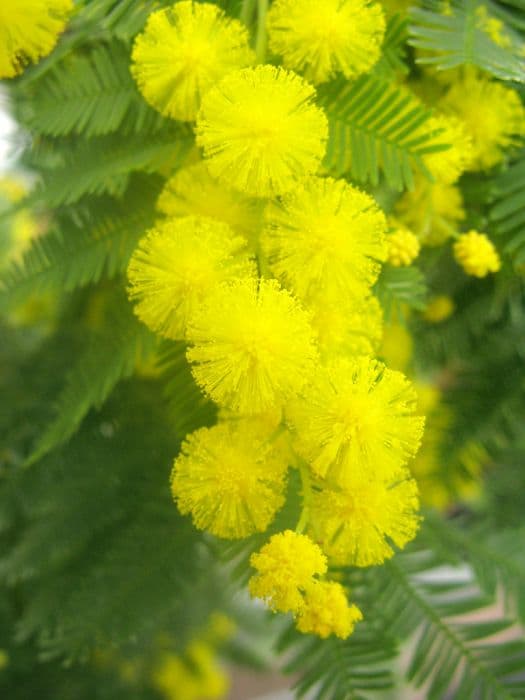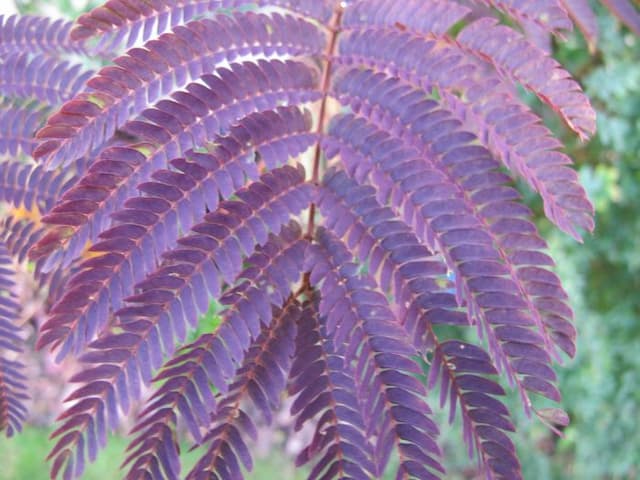Bean (runner) 'White Lady' Phaseolus coccineus 'White Lady' (PBR)

ABOUT
A climbing perennial, often grown as an annual. White flowers appear throughout the summer and early autumn which turn into thick, green, juicy pods
About this plant
 Names
NamesSynonyms
Scarlet Runner Bean, White Flowered Runner Bean, Multiflora Bean, White Dutch Runner Bean, Case Knife Bean
Common names
Phaseolus coccineus 'White Lady' (PBR)
 Characteristics
CharacteristicsLife cycle
Perennials
Foliage type
Deciduous
Color of leaves
Green
Flower color
White
Height
10 feet (3 meters)
Spread
3 feet (0.9 meters)
Plant type
Climber
Hardiness zones
2
Native area
Americas
Benefits
 General Benefits
General Benefits- Ornamental Value: The plant offers attractive foliage and flowers, enhancing visual appeal in garden settings.
- Culinary Uses: The beans produced by Phaseolus coccineus 'White Lady' are edible and can be used in a variety of dishes.
- Pollinator Attraction: The flowers attract bees and other pollinators, supporting biodiversity and the health of nearby plants.
- Nitrogen Fixation: As a legume, it helps to enrich soil by fixing atmospheric nitrogen, thereby reducing the need for chemical fertilizers.
- Versatility: It can be grown on trellises, fences, or other vertical structures, making it ideal for gardens with limited space.
- Improves Soil Structure: The root system can help prevent soil erosion and improve soil quality over time.
- Ease of Growth: It's known to be relatively easy to cultivate, requiring minimal maintenance once established.
- Fast-Growing: The plant grows quickly, providing swift coverage or produce.
- Companion Planting: It can be used effectively in companion planting strategies to deter pests and diseases.
- Seasonal Interest: It offers seasonal interest with its distinct phases of growth, flowering, and bean production.
 Medical Properties
Medical PropertiesThis plant is not used for medical purposes.
 Air-purifying Qualities
Air-purifying QualitiesThis plant is not specifically known for air purifying qualities.
 Other Uses
Other Uses- Scarlet Runner Bean 'White Lady' can be used as a natural dye source. The flowers and bean pods can be boiled to extract pigments for fabric and yarn dying.
- As an educational tool, it can help teach children about plant growth and pollination. The large size and colorful flowers of the plant make it ideal for garden-based learning.
- The sturdy vines can be trained to grow over structures, providing shade in outdoor seating areas or garden retreats.
- The beans can be used as a sustainable fodder for livestock, contributing to a farm's self-sufficiency.
- Its attractive flowers can contribute to beneficial insect habitat creation, inviting pollinators such as bees and butterflies into the garden.
- The robust vines are useful for creating living sculptures or garden art by training them over frameworks to achieve desired shapes.
- The hollowed-out mature beans can be used for crafting, such as making beads for jewelry or decorative purposes.
- Dried seed pods from the Scarlet Runner Bean can be used as a component in musical instruments, such as shakers or maracas.
- The large, broad leaves can serve as a natural mulch when fallen, helping to retain soil moisture and suppress weeds.
- As part of companion planting, the Scarlet Runner Bean can be grown alongside crops to improve soil fertility thanks to its nitrogen-fixing capabilities.
Interesting Facts
 Feng Shui
Feng ShuiThe Scarlet Runner Bean is not used in Feng Shui practice.
 Zodiac Sign Compitability
Zodiac Sign CompitabilityThe Scarlet Runner Bean is not used in astrology practice.
 Plant Symbolism
Plant Symbolism- Productivity: As a bean plant, Phaseolus coccineus 'White Lady' (commonly known as the Runner Bean) is a symbol of productivity and abundance due to its vigorous growth and high yield of beans.
- Nourishment: Runner beans are nutritious, representing physical and spiritual nourishment, as they are a staple food in many cultures.
- Adaptability: This plant's ability to grow in a variety of conditions symbolizes adaptability and resilience in different environments.
- Support: The climbing nature of the Runner Bean signifies the need for support in life, as the plant requires a structure to grow upon.
- Connection: The way the tendrils of the Runner Bean reach out and wrap around supports can symbolize the importance of reaching out and making connections in a community.
 Water
WaterScarlet runner beans, commonly referred to as 'White Lady', require regular watering, especially when they are flowering and during dry periods. They should be watered deeply once a week with approximately 1 gallon of water per plant, ensuring that the soil is moistened to a depth of at least 6 inches. During particularly hot or windy weather, the frequency of watering may need to increase to twice per week. Be cautious not to overwater, as this can lead to root rot.
 Light
LightScarlet runner beans thrive in full sun, so it's best to place them in a location where they'll receive at least 6 to 8 hours of direct sunlight daily. However, they can tolerate partial shade, particularly in the afternoon in very hot climates. Ensure that the plant is situated in a spot where it's exposed to bright and unfiltered sunlight for the majority of the day to promote robust growth and a plentiful harvest.
 Temperature
TemperatureScarlet runner beans grow best within a temperature range of 60°F to 75°F, which is their ideal growing condition. They are quite cold-sensitive and should not be exposed to temperatures below 50°F. Additionally, temperatures above 85°F may cause flower drop and reduce bean set. Plant them outdoors only after all danger of frost has passed and the soil has warmed.
 Pruning
PruningFor Scarlet runner beans, pruning can help manage the size of the plant and encourage better air circulation. It's recommended to prune the runners if they become too long or tangled, which often means cutting them back once in midsummer. The best time to prune is in the early morning when the plant is most turgid. Remove any dead or diseased foliage as it appears to maintain the health and appearance of the plant.
 Cleaning
CleaningAs needed
 Soil
SoilScarlet runner beans favor well-draining soil enriched with compost or well-rotted manure, with a pH of 6.0 to 6.8 for optimal growth.
 Repotting
RepottingScarlet runner beans, being annuals, do not typically require repotting; sow directly outdoors after the frost.
 Humidity & Misting
Humidity & MistingScarlet runner beans thrive in moderate humidity and do not require particularly high humidity levels.
 Suitable locations
Suitable locationsIndoor
Provide strong light, stakes for climbing, and keep soil moist for indoor growth.
Outdoor
Plant in full sun, provide support for climbing, and water regularly.
Hardiness zone
10-11 USDA
 Life cycle
Life cycleThe life of the Scarlet Runner Bean 'White Lady' (PBR) begins with seed germination, which occurs in warm soil with adequate moisture, typically in the late spring after the last frost. Following germination, the seedling stage involves the emergence of the plant's first leaves and root system establishment. As the plant transitions to the vegetative stage, it rapidly grows stems and more leaves, and tending to prefer a support structure, it will begin to climb. It then enters the flowering stage, producing attractive white flowers that, if pollinated, will lead to the development of long green pods containing the beans. During the fruiting stage, these pods mature, and the beans inside can be harvested when they reach full size yet are still tender. At the end of the growing season, if not harvested, the pods will dry out, and the plant will enter dormancy or die, depending on if it is treated as an annual or perennial in the specific region’s climate, with seeds ready to start the next generation.
 Propogation
PropogationPropogation time
Spring-Summer
The Scarlet Runner Bean 'White Lady' is commonly propagated by seed. The best time to sow the seeds is in late spring when the soil has warmed up, typically after the last frost date. To propagate, take bean seeds and plant them about 1 inch (2.5 cm) deep in well-drained soil, spacing them approximately 6 inches (15 cm) apart in rows that are 1.5 to 2 feet (45 to 60 cm) apart. Water the planted seeds thoroughly. Germination occurs in 8-14 days under favorable conditions, which include a soil temperature of around 60-85 degrees Fahrenheit (15-29 degrees Celsius). Once the seeds have sprouted and grown into young plants, provide support for the vines to climb, as Scarlet Runner Beans are climbing plants. This method remains the most straightforward and frequently used for home gardeners seeking to cultivate this particular variety of bean.









